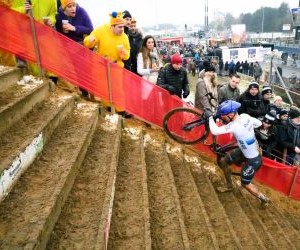HOW DO I REDUCE ANXIETY BEFORE RACES?
Pre-race anxiety is a common experience for athletes of all levels. The mix of anticipation, adrenaline, and pressure can create both mental and physical tension that, if unmanaged, hurts performance. The good news is that pre-race nerves can be turned into an advantage with the right preparation. This article explores psychological techniques, physical routines, and mindset strategies to help reduce anxiety before races, so you can channel nervous energy into focus and performance.

Understanding pre-race anxiety
Anxiety before races is not inherently negative—it’s a natural response to competition. However, when it becomes overwhelming, it interferes with concentration, decision-making, and physical performance. Understanding the roots of pre-race anxiety is the first step to controlling it.
Why anxiety happens
Pre-race anxiety often stems from the body’s fight-or-flight response. Elevated heart rate, shallow breathing, and nervous energy are physical signs of stress hormones like adrenaline and cortisol. Mentally, anxiety can come from fear of failure, self-doubt, or external expectations. Recognizing that these reactions are normal allows athletes to address them proactively.
Common symptoms
Athletes may experience butterflies in the stomach, restlessness, tight muscles, or overthinking strategies before the race begins. These symptoms can lead to mistakes like poor pacing or wasted energy at the start line. Identifying these signs early is key to applying coping techniques effectively.
Physical: rapid heartbeat, sweating, muscle tension.
Mental: racing thoughts, self-doubt, distraction.
Behavioral: restlessness, fidgeting, erratic warm-ups.
By reframing anxiety as a sign of readiness rather than weakness, athletes can begin to channel this energy into improved performance instead of letting it spiral into panic.
Mental strategies for calmness
Mental preparation is one of the most powerful tools to manage pre-race anxiety. Athletes who practice visualization, mindfulness, and positive self-talk are better equipped to control nerves and stay focused under pressure.
Visualization and imagery
Visualization involves mentally rehearsing the race, from warming up to crossing the finish line. Athletes imagine themselves executing their strategy with confidence, which reduces uncertainty and primes the brain for success. Studies show that mental imagery can improve performance by activating the same neural pathways used in physical execution.
Mindfulness and breathing
Mindfulness helps athletes stay present instead of worrying about outcomes. Techniques such as focused breathing, meditation, or progressive muscle relaxation calm the nervous system. For example, taking slow, deep breaths while repeating a calming phrase can quickly reduce heart rate and tension.
Positive self-talk
Replacing negative thoughts with affirmations like “I am ready” or “I trust my training” strengthens confidence. Many athletes develop personal mantras to repeat before and during races. This mental shift reframes nerves as excitement, transforming anxiety into motivation.
Practice visualization of race success.
Use breathing techniques to calm nerves.
Adopt mantras and positive affirmations.
By building these mental habits, athletes develop resilience against pre-race nerves. Over time, anxiety becomes a familiar companion that can be controlled rather than a barrier that derails performance.
Physical routines and preparation
Mental strategies work best when paired with physical routines that prepare the body for competition. Consistent warm-ups, sleep, and nutrition reduce anxiety by giving athletes confidence in their readiness.
Structured warm-ups
A familiar warm-up routine helps athletes transition from nervous energy to race focus. Dynamic stretches, light jogging, or sport-specific drills activate muscles while also creating a sense of control. Consistency is key—performing the same sequence before every race conditions the body and mind to feel prepared.
Sleep and nutrition
Good rest and fueling reduce the physiological stress that can amplify anxiety. Athletes should aim for 7–9 hours of sleep in the days leading to competition. Pre-race meals rich in carbohydrates, moderate protein, and low fat ensure steady energy without digestive discomfort. Hydration is equally important, as dehydration can intensify pre-race jitters.
Race-day logistics
Anxiety often spikes due to uncertainty around logistics. Arriving early, checking equipment, and familiarizing yourself with the course reduce last-minute stress. Having a checklist for gear, nutrition, and warm-up routines creates confidence and minimizes surprises.
Follow a consistent warm-up routine.
Prioritize sleep and proper pre-race meals.
Plan logistics in advance to reduce uncertainty.
Physical preparation not only primes the body but also reassures the mind. Athletes who trust their routines experience less doubt and approach the start line with calm confidence.
When mental strategies and physical routines are combined, anxiety transforms into focus. Athletes learn to control the controllable and embrace the adrenaline that fuels peak performance.






